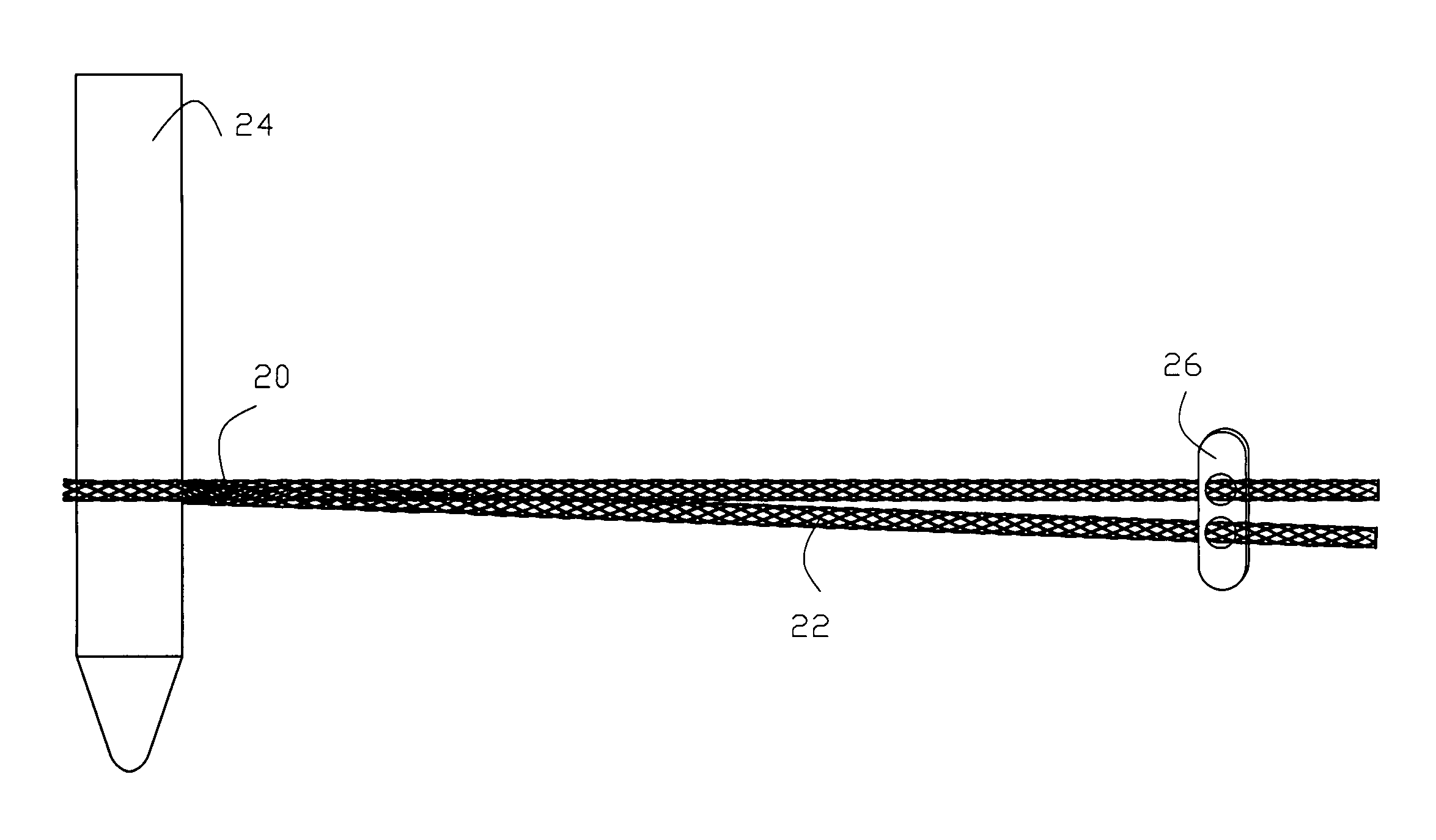Ligament And Tendon Prosthesis
a technology of ligament and tendon, applied in the field of medical devices, can solve the problems of reducing affecting the healing effect of the ligament or the tendon, so as to improve the resistance of the prosthesis to further stretching and improve the resistance to tension. , the effect of decreasing the diameter of the prosthesis
- Summary
- Abstract
- Description
- Claims
- Application Information
AI Technical Summary
Benefits of technology
Problems solved by technology
Method used
Image
Examples
Embodiment Construction
[0022]FIG. 1 shows a tendon or ligament prosthesis 2 in accordance with one embodiment of the invention. The prosthesis 2 has an undeployed configuration shown in FIG. 1a, and a deployed configuration shown in FIG. 1b. The prosthesis 2 comprises a plurality of filaments 4 arranged in an elongated mesh. In FIG. 1, each filament has a helical shape, and the filaments have been woven into a slender cylinder. The ends of the prosthesis may comprise an anchoring device for anchoring each end to a body tissue, such as a bone tissue, or cartilage. The anchoring device may be an interference screw 6 or a bone anchor 8. The prosthesis 2 may be provided with a protective sleeve 9 to reduce friction between the prosthesis and body structures after deployment of the prosthesis. The sleeve 9 may be made from a biodegradable material, such as poly glycolic acid, poly lactic acid, poly caprolactone, dioxanone, chondroitin sulphate, hyaluronic acid, or a synthetic polymer based on hyaluronic acid s...
PUM
 Login to View More
Login to View More Abstract
Description
Claims
Application Information
 Login to View More
Login to View More - R&D
- Intellectual Property
- Life Sciences
- Materials
- Tech Scout
- Unparalleled Data Quality
- Higher Quality Content
- 60% Fewer Hallucinations
Browse by: Latest US Patents, China's latest patents, Technical Efficacy Thesaurus, Application Domain, Technology Topic, Popular Technical Reports.
© 2025 PatSnap. All rights reserved.Legal|Privacy policy|Modern Slavery Act Transparency Statement|Sitemap|About US| Contact US: help@patsnap.com



